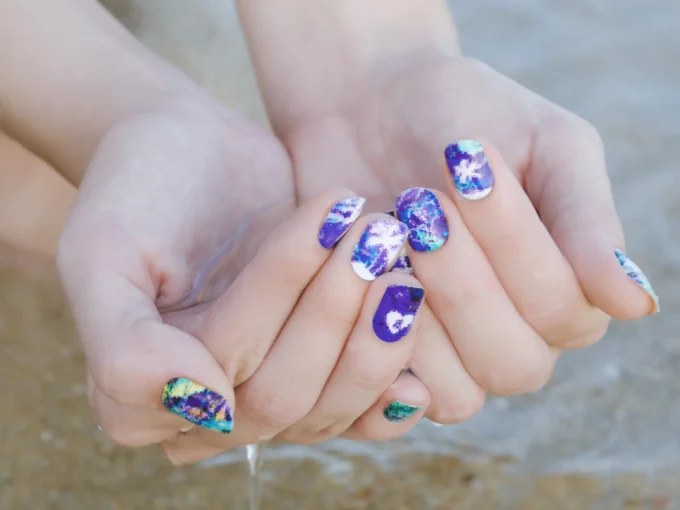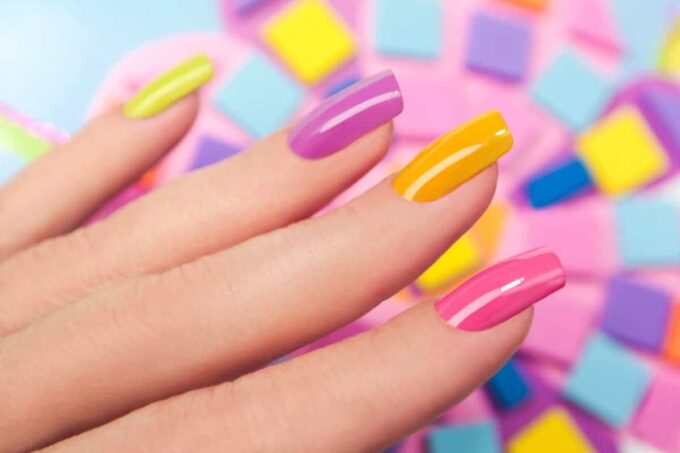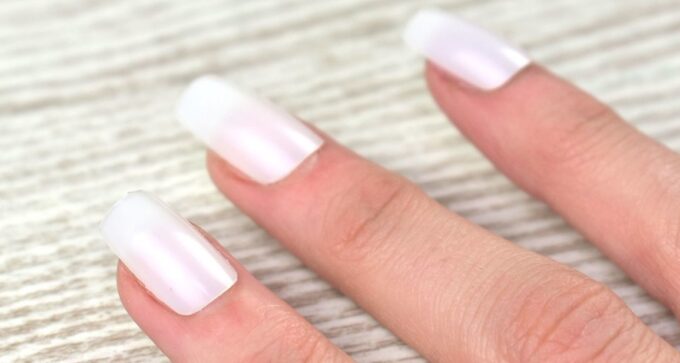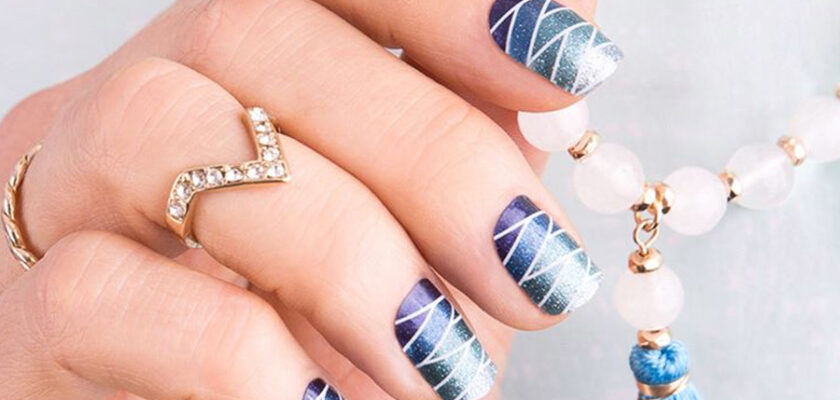An at-home manicure can be time-consuming, from carefully putting lacquer onto your nails with your non-dominant hand to waiting for the varnish to dry. Nail wraps could theoretically help in this situation. Nail wraps seem, by all accounts, to be acquiring colossal prevalence in our steadily developing world, which is why we’ve committed this blog to everything about nail wraps.
What are Nail Wraps?
Fabric strips are combined with resin to create synthetic nails, known as nail wraps. It all started in the 1920s when nail technicians got imaginative and repaired broken nails with coffee filters and tea bags. It evolved and improved throughout time to the point that the nail wraps we use today, paper, cloth, silk, and fiberglass, were the best nail wraps by the 1980s.
Nail wraps are available in nearly any design, but they can also be purchased as plain textiles, allowing you to customize them once applied to your nails. Nail wraps are made by several companies since they have become very popular in the nail tech profession.
Types of Nail Wraps

Source:allure.com
1. Silk Nail Wraps
Silk nail wraps will give you the most natural-looking nails. This is because it has a smooth texture that allows you to effortlessly paint over it, mimicking the smoothness of your natural nails. You can wear these without any color for a more natural look. Silk strands have microscopic pores, which allow your nails to breathe. Nonetheless, this material is the most vulnerable of the other nail wraps and won’t keep going as long as the others.
Give your nails vibrancy with nail wraps NZ.
2. Linen Nail Wraps
Linen wraps are composed of hefty, tightly woven linen. It is significantly thicker and bulkier than other wrap textiles. Nail adhesives have a harder time penetrating linen than silk or fiberglass. Even after the wrap resin has been applied, a colored polish must be used to cover it thoroughly. Linen is chosen because it is the most durable wrap material.
3. Fiberglass Nail Wraps
If linen nail wraps were the king of long-lasting beauty, this is the king. Fiberglass is created by melting glass into a plastic-like substance and straining it through microscopic holes to produce thin hair-like threads. The strips for our nails are then interlaced together. This makes sense for you to see the winding around the design on fiberglass nails, assuming that you look carefully. It’s the hardest of the three. It’s conceivable that they’re so unreasonable, significantly more so than acrylic work. They are, nonetheless, less destructive to the hands and are more straightforward to eliminate than acrylic uneasiness.
Benefits of Nail Wraps

Source:weheartthis.com
No Dry Time
There is no need for drying time is the primary advantage of using nail wraps. Compared to typical liquid nail polish, doing your nails is considerably easier and faster. You may apply them to your nails and go about your day without the concern of smearing and having to start over. There’s also the misconception that nail wraps are a “one coat” manicure. No more applying 2-3 coats of polish to each nail to achieve the desired hue or strength for long-lasting color. Without a doubt, using nail wraps is the quickest way to do your nails!
Strengthening Agent for Nails
Silk wraps adhere to the nail plate, giving weak or thin nails added strength. When a client opts to skip the treatment of a full acrylic nail, manicurists use silk wrap to keep the acrylic tips in place. Unlike artificial nails, which feel like they are dragging on the entire nail plate when pressure is given to the tip, silk wraps allow the nail to respond normally to pressure. Silk wraps, on the other hand, are not recommended for women who labor with their hands or are constantly in water.
Efficient Treatment
At the point when your normal nails are uncovered after different nail trim treatments with acrylic and gel nails, they will undoubtedly seem harmed. Nail wraps are powerful at covering breakages and scratches, and the staining will not be excessively recognizable. You can likewise utilize it to improve the presence of the nail wraps.
Easier To Shape
Acrylics or gel nail polish are pliable because you may simply change the formula to achieve the desired result. That is, however, only true when the formula is still moist. The only way to shape the nails once it hardens is to file them, but even then, you might not obtain what you want. Nail wraps, on the other hand, are easier to shape because they are fabric-like and may be trimmed before being hardened with a resin activator.
What can I do to extend the life of my nail wraps?

Source:wikihow.com
Wearing nail wraps has some disadvantages, one of which is that they tend to lift quickly. They might last two weeks at most. There are, however, some things you can do to extend their life.
- Avoid the Heat
High temperatures weaken and damage your nail coverings. The heat from hand dryers, blow dryers, and even cooking over an open flame can harm nail coverings.
- Apply A Top Coat
Applying a new coat of topcoats to your nails every two days will help you achieve this. You’ll end up with clumpy, thick nails if you do it more than twice a week. Because top coats build a layer over your nail wraps, it’s important to strengthen your first line of defense. So keep applying topcoats to those nails to strengthen them.
- Avoid Putting Water
This is not true of all nail wraps. Water has the strongest effect on silk wraps. As previously said, all they require is a little soak in water to dissolve. When using the silk nail wrap, avoid submerging your hands in water for too long. If you have to come into touch with water, make sure to dry your hands properly as soon as possible.
Conclusion
Nail wraps use silk, cloth, and fiberglass to make smoother, more regular-looking nails. When contrasted with acrylic and gel, they are simpler to apply and eliminate. They’re likewise preferable for your nails over acrylic since they make a boundary between your nail plates and the polish or acrylic.

